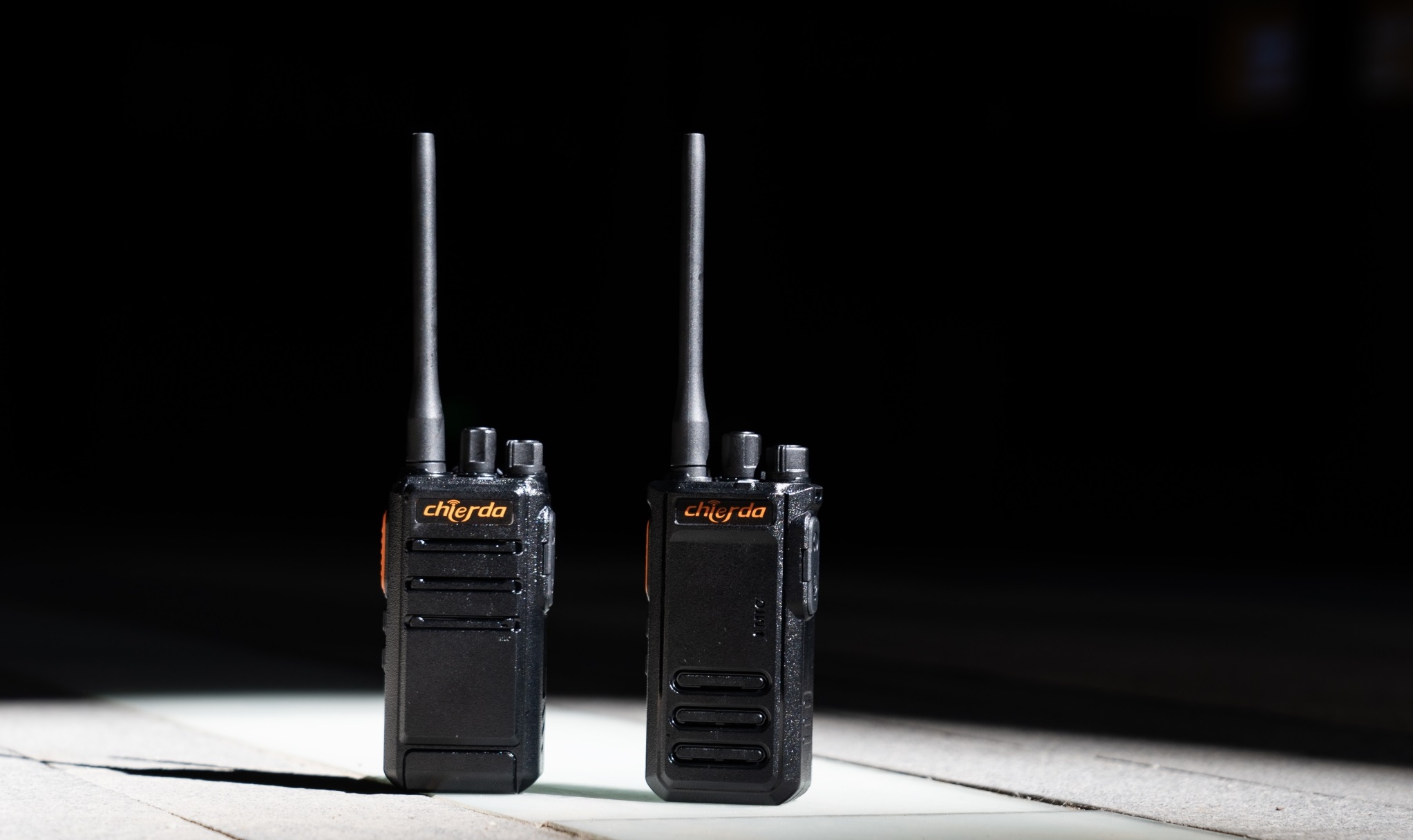The frequencies of walkie talkies that are often used in the market are VHF and UHF. In the last article, we have already introduced what VHF is. UHF and VHF are in different frequency bands. Today, let’s dive into this frequency band together.
The Defination of UHF Walkie Talkie
A UHF walkie talkie is a type of two-way radio that operates on Ultra High Frequency (UHF) bands, typically between 400 MHz and 470 MHz. UHF radios are especially known for their strong signal penetration, making them ideal for communication in environments with obstacles like buildings, walls, concrete, or dense foliage.
Unlike VHF (Very High Frequency) radios, which perform best in open outdoor areas, UHF walkie talkies excel in urban and indoor settings where signals must travel through obstructions. This makes them a popular choice across industries such as hospitality, construction, warehousing, retail, event planning, and security.
How does UHF Frequencies Work?
UHF signals have shorter wavelengths than VHF, allowing them to bounce off and pass through barriers more effectively. As a result, UHF walkie talkies provide better coverage inside buildings, multi-floor facilities, basements, and even thick forests.
Why Choose a UHF Walkie Talkie?
1. Excellent Indoor Coverage:
One of the biggest advantages of UHF walkie talkies is their superior performance indoors. Because UHF signals have shorter wavelengths, they can penetrate walls, glass, concrete, and steel more effectively than VHF signals. So UHF walkie talkies are ideal for using in office buildings, shopping malls, hotels, hospitals, and schools—anywhere communication needs to flow through multiple rooms or floors.
2.Clear Audio in High-interference Areas:
UHF frequencies are less prone to interference than VHF, especially in urban environments where many devices compete for bandwidth. This means you get crisp, uninterrupted audio even in areas with Wi-Fi, heavy machinery, or other electronic devices. UHF walkie talkies often come with high-gain antennas to further improve clarity. Clear communication is vital for avoiding mistakes, improving response times, and ensuring safety, especially in noisy environments like construction sites or production floors.

3.Compact and Portable Design
The antennas on UHF radios can be made smaller without sacrificing performance. This results in more compact, lightweight, and portable devices. That’s why most of outdoor walkie talkies operate on UHF frequency band. In addition, UHF walkie talkies are easier to wear on a belt clip or carry in a pocket, making them comfortable for long hours of use. This is particularly useful for professionals in hospitality, event coordination, retail, and security, who need hands-free and convenient communication tools throughout their shift.
4.Versatility:
UHF walkie talkies are designed for multi-environment flexibility. They are widely used across industries such as:
Retail & Supermarkets – For real-time communication between cashiers, stock staff, and managers.
Security Services – For instant alerts and coordination in high-traffic areas.
Event Management – It is vital to manage logistics, staff, and crowd control.
Construction & Maintenance – For coordinating workers on-site and responding to changes quickly.
With the right UHF radio, you can simplify daily operations, reduce response times, and improve team coordination.
5.Secure Communication:
Many UHF models offer privacy codes and digital encryption for confidential conversations.
Conclusion
Investing in a UHF walkie talkie means choosing efficiency, durability, and consistent performance. From everyday workplace coordination to critical operations in emergency scenarios, UHF two-way radios provide the coverage, clarity, and control that professionals rely on.
If you're looking for the best UHF walkie talkie for your business or team, explore our collection now and discover the difference reliable communication can make.



